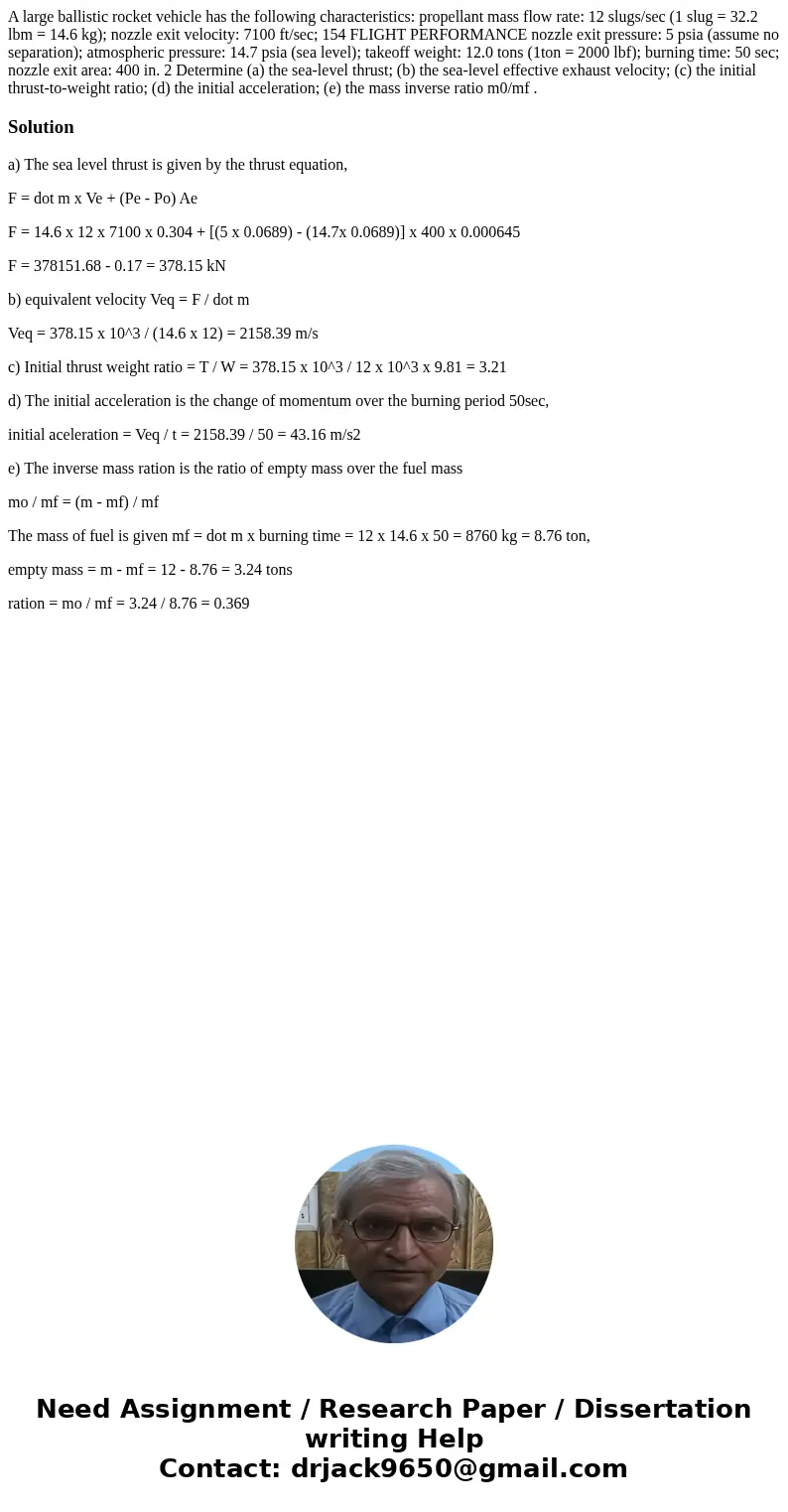A large ballistic rocket vehicle has the following character
A large ballistic rocket vehicle has the following characteristics: propellant mass flow rate: 12 slugs/sec (1 slug = 32.2 lbm = 14.6 kg); nozzle exit velocity: 7100 ft/sec; 154 FLIGHT PERFORMANCE nozzle exit pressure: 5 psia (assume no separation); atmospheric pressure: 14.7 psia (sea level); takeoff weight: 12.0 tons (1ton = 2000 lbf); burning time: 50 sec; nozzle exit area: 400 in. 2 Determine (a) the sea-level thrust; (b) the sea-level effective exhaust velocity; (c) the initial thrust-to-weight ratio; (d) the initial acceleration; (e) the mass inverse ratio m0/mf .
Solution
a) The sea level thrust is given by the thrust equation,
F = dot m x Ve + (Pe - Po) Ae
F = 14.6 x 12 x 7100 x 0.304 + [(5 x 0.0689) - (14.7x 0.0689)] x 400 x 0.000645
F = 378151.68 - 0.17 = 378.15 kN
b) equivalent velocity Veq = F / dot m
Veq = 378.15 x 10^3 / (14.6 x 12) = 2158.39 m/s
c) Initial thrust weight ratio = T / W = 378.15 x 10^3 / 12 x 10^3 x 9.81 = 3.21
d) The initial acceleration is the change of momentum over the burning period 50sec,
initial aceleration = Veq / t = 2158.39 / 50 = 43.16 m/s2
e) The inverse mass ration is the ratio of empty mass over the fuel mass
mo / mf = (m - mf) / mf
The mass of fuel is given mf = dot m x burning time = 12 x 14.6 x 50 = 8760 kg = 8.76 ton,
empty mass = m - mf = 12 - 8.76 = 3.24 tons
ration = mo / mf = 3.24 / 8.76 = 0.369

 Homework Sourse
Homework Sourse